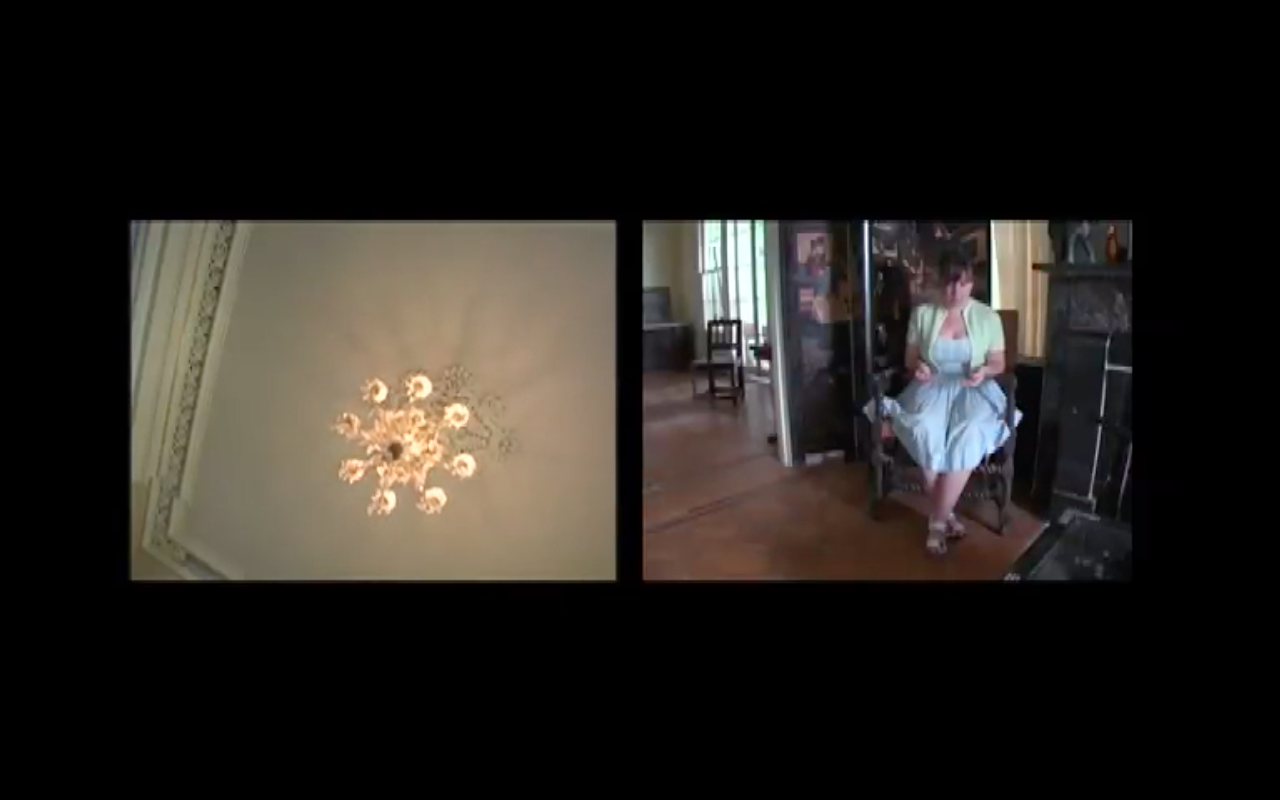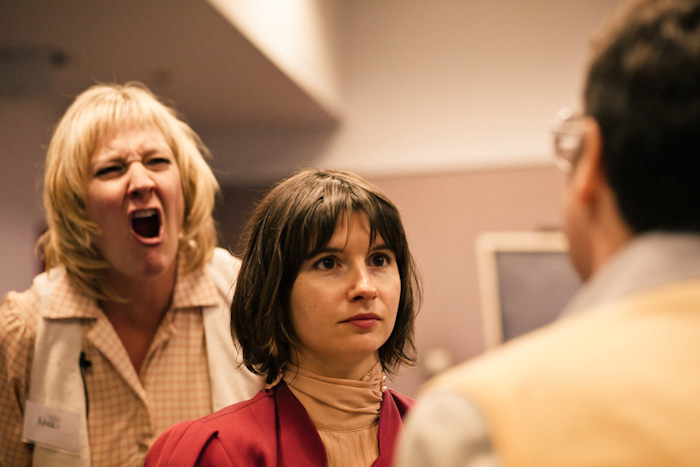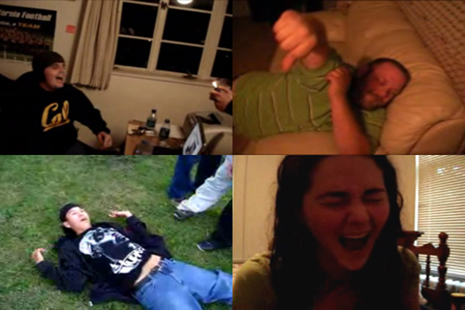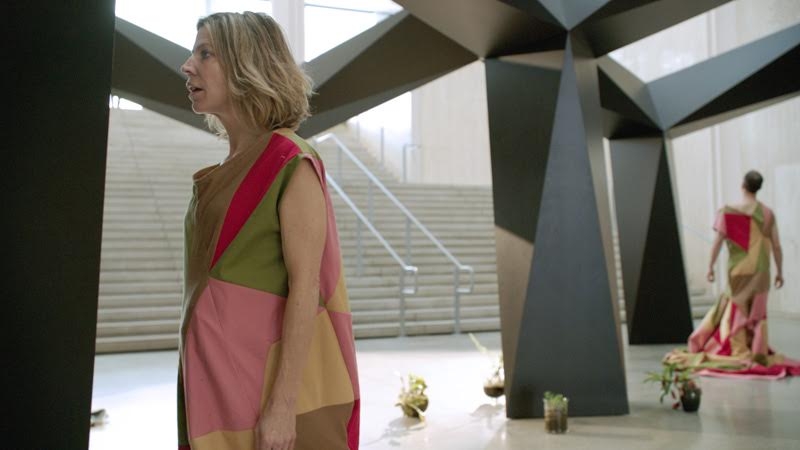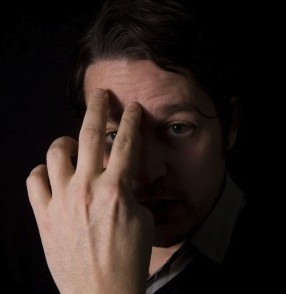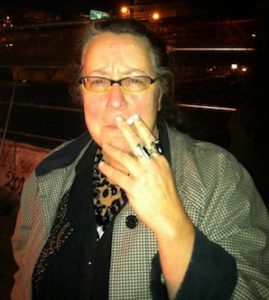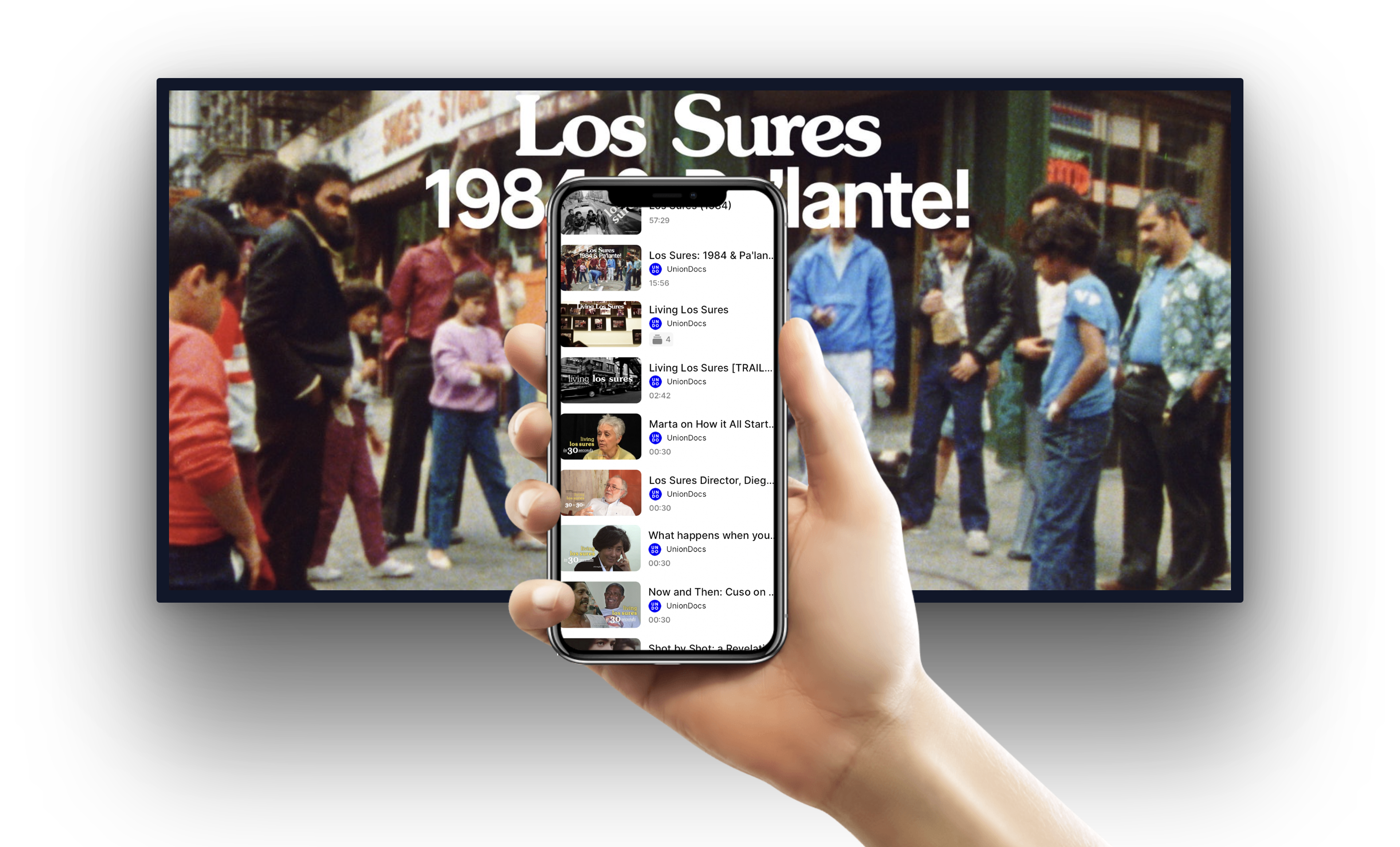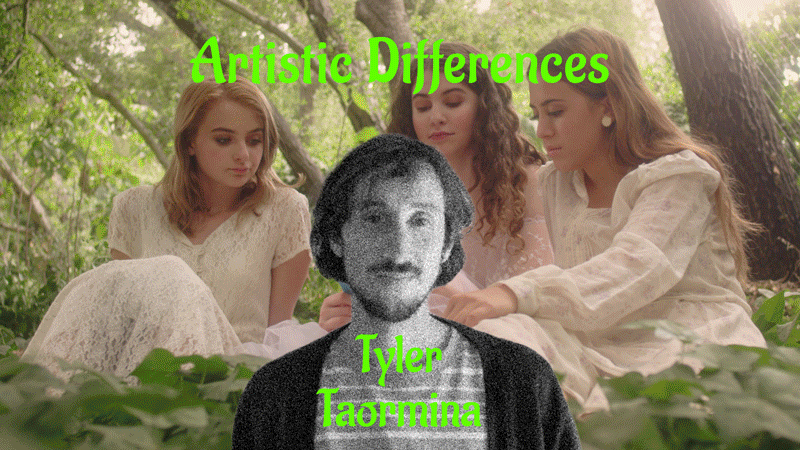“The American Imagination demands the real thing, and to attain it, must fabricate the absolute fake.”–Umberto Eco
The term, “reenactment,” brings up many past and present projects in contemporary art and film: Fresh Acconci (1995) by Mike Kelley and Paul McCarthy, Jeremy Deller’s The Battle of Orgreave (2001), Allison Smith’s The Muster (2005), Seven Easy Pieces (2005) by Marina Abramovic and the work of Omer Fast from Spielberg’s List (2003) to Godville (2005) to The Casting (2007) to 5,000 Feet is Best (2011) to his most recent, Everything That Rises Must Converge (2013). Currently, Stan Douglas’s Luanda-Kinshasa (2014) [at David Zwirner], a six-hour video projection that reconstructs both the feel and the groove of recordings that occurred at Columbia Records on 30th street in New York —urges us to remember, indeed relive the work of Miles Davis, Charlie Mingus, Billie Holiday and others who recorded there. The latter is a kind of synthesized gesamtkunstwerk that seems to effortlessly riff across jazz, blues, and improvised rock delivering a kind of mnemonic Rorschach of sixties coolness. Where bell-bottoms, linen shirts, tweed belts and bandana-styled fros attempt to resurrect period and style in Douglas’s recent work, algorithmic aesthetics, LARP, and hypnosis are the tools that drive Brady Condon and Peggy Ahwesh’s work in this program. Neither would, perhaps, use the term “reenactment” as a way of describing what they are attempting to address in their work. As Johanna Drucker has argued, “the ‘real’ and the ‘symbolic’ are both so traumatically disjunctive that no act of making strange can make them stranger.”
After Death Animations (2007), Condon has almost exclusively claimed to use performance models that come out of a combination of Nordic models of LARP or Live Action Role Playing Games with 1970s durational, rule-based performances by Allan Kaprow, Trisha Brown, and Yvonne Rainer. But, it isn’t accidental that Condon, coming out of an interest in role-playing (he was a Dungeon master throughout his youth), animation and gaming would be drawn to performance figures that often integrated film, like Yvonne Rainer did with the films of Hollis Frampton in Carriage Discreteness (1966)— and or her own parallel practices in performance and film: Volleyball (aka Foot Film, 1967) or Hand Movie (1968). The apparatus of film, like the apparatus of performance could deliver new sets of epistemologies about consciousness (indeed, the hope was that, like psychedelic drugs, it could possibly expand consciousness). Moreover, an aesthetics of emergence informed both worlds—watching and waiting to see how the algorithms of technology, as well as rule-based social situations would play themselves out. In Condon’s Level5, we see a wonderfully troubled, confusing merging of the algorithms of game space—metaphorically situated, but also fully lived through the rules established by LARPers directing and participating in transactional roles—with the repetitions of and compulsions of psychoanalytic transfers, constantly threatening to blow closed the supposed rule-based role playing, or the “designated zones” of gaming or “relating.”
Condon often designs performances that utilize live action role-playing techniques whereby he creates and populates temporary worlds, then records on video these unscripted and often disorienting interactions, documenting them in an ethnographic style. He will create a “mix tape” for the event that will be composed of the works below in varying durations.
Ahwesh’s projects are also more about transmission than theatrical reenactment. Actors in Ahwesh’s films are encouraged to “be themselves” but often under unusual circumstances. Thus, the results are performances that threaten to interpolate the viewer into uncanny worlds where fiction and documentary collide. The volatility of Klaus Kinski (in Herzog’s My Best Friend, and Aguirre: Wrath of God) is matched in Ahwesh’s films by the unpredictable behavior of actors like Jennifer Montgomery (Martina’s Playhouse), Jackie Smith (The Star Eaters, The Ape of Nature), and Deirdre Lewis (Strange Weather). Ahwesh brings us into the darkest corners of an actor’s psychological wasteland — where they can feel their most capable ambitions turn on them like reflexive heads, cannibalizing themselves in front of the camera. This is the romantic space, if there is one in Ahwesh’s work — that hypnotic state where fear and pleasure mingle, where ambition and failure wrestle, where the body and its ghost consume each other. It’s a place of memory and of forgetting —where perhaps only a cinematic map of objects will help the actor find his or her way out of their own psychic labyrinth. —Melissa Ragona



